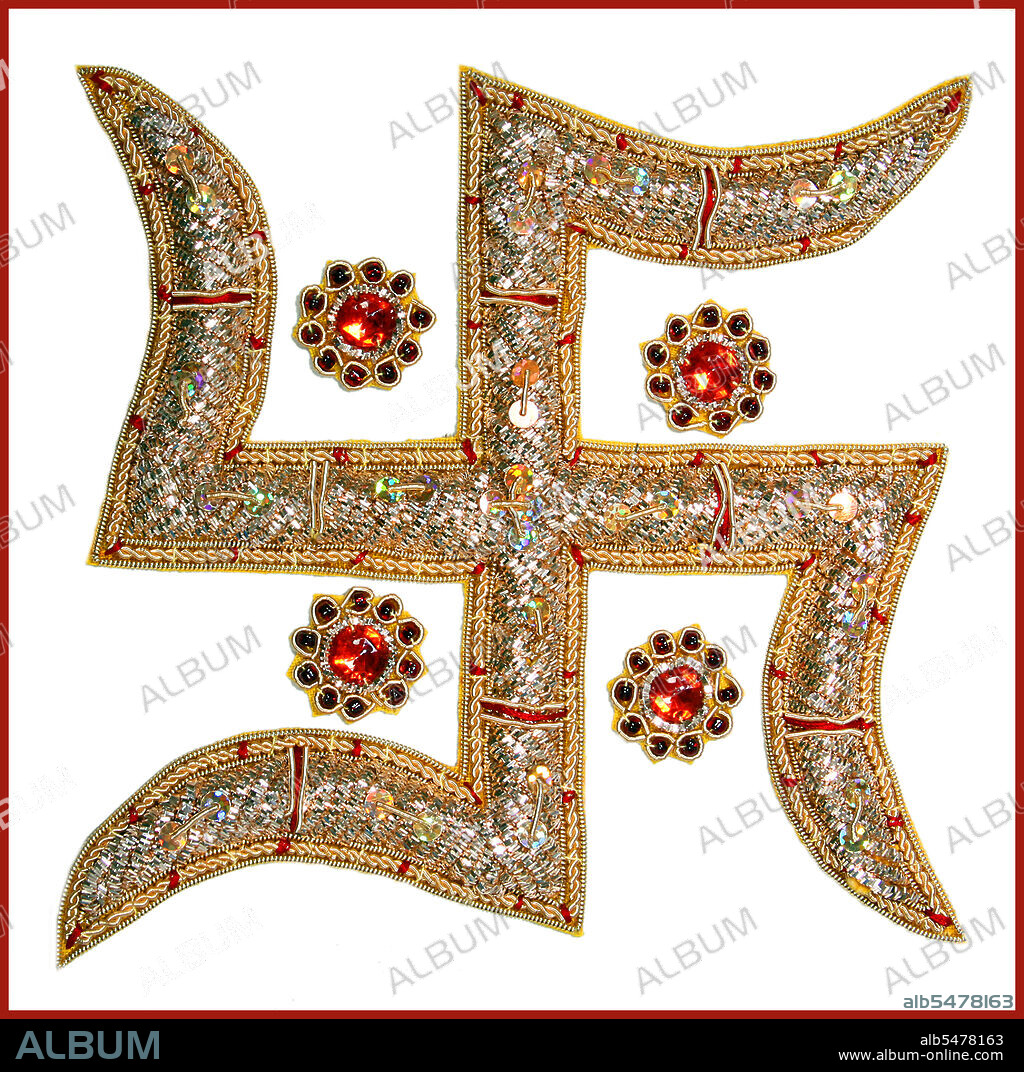alb5478163
An elaborate filigree svastika or 'swastika', sacred to Hindusim, Buddhism, and the Jain and Bon religions.

|
Add to another lightbox |
|
Add to another lightbox |



Title:
An elaborate filigree svastika or 'swastika', sacred to Hindusim, Buddhism, and the Jain and Bon religions.
Caption:
The earliest archaeological evidence of swastika-shaped ornaments dates back to the Indus Valley Civilization of Ancient India as well as Classical Antiquity. Swastikas have also been used in various other ancient civilizations around the world. The swastika remains widely used in Indian religions, specifically in Hinduism, Buddhism, and Jainism, primarily as a tantric symbol to evoke shakti or the sacred symbol of auspiciousness. The word 'swastika' comes from the Sanskrit, literally meaning 'to be good'. Despite the use of the name swastika for the Nazi hakenkreuz or 'hook cross', the South Asian swastika has nothing to do with National Socialism or Fascism.
Credit:
Album / Pictures From History/Universal Images Group
Releases:
Model: No - Property: No
Rights questions?
Rights questions?
Image size:
4200 x 4180 px | 50.2 MB
Print size:
35.6 x 35.4 cm | 14.0 x 13.9 in (300 dpi)
Keywords:
ART • ARTS • ASIA • ASIAN • BON • BUDDHISM • BUDDHISM, BHUTANESE • BUDDHIST • CULT, BUDDHIST • CULT, HINDUISM • EMBLEM • HINDU • HINDUISM • HINDUS • HISTORIA UNIVERSAL • HISTORICAL • HISTORY • INDIA • INDIAN • INDIGENOUS PEOPLES OF THE AMERICAS • INDIO • JAIN • JAINISM • JAINISM, INDIAN RELIGION • LEGEND • RELIGION • SIMBOLOS • SWASTIKA • SYMBOL • SYMBOLISM (ART) • SYMBOLISM
 Pinterest
Pinterest Twitter
Twitter Facebook
Facebook Copy link
Copy link Email
Email

